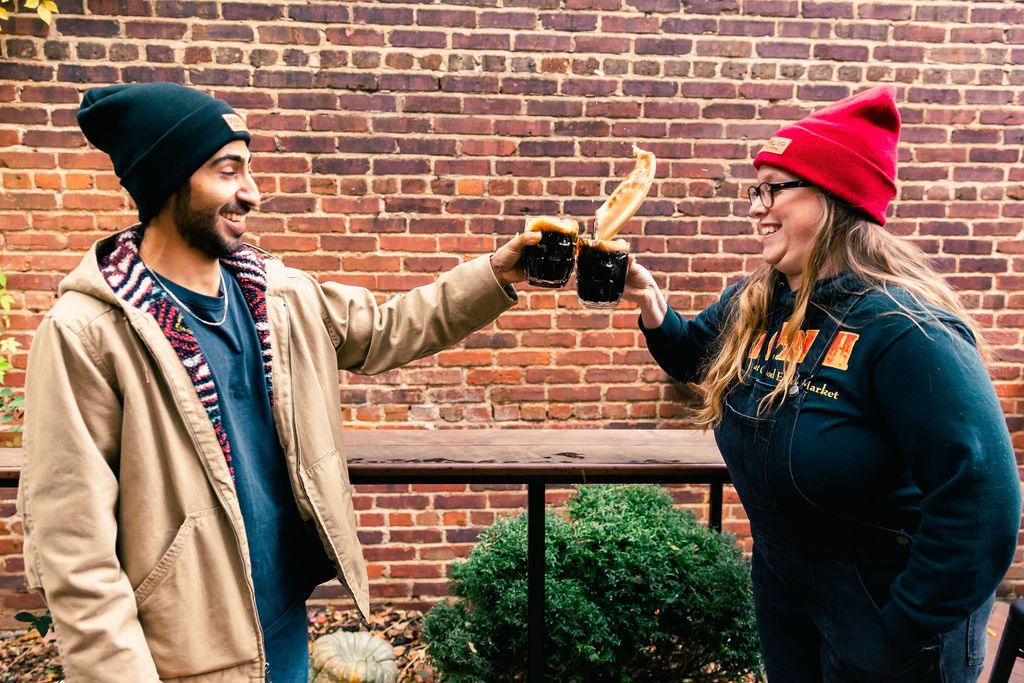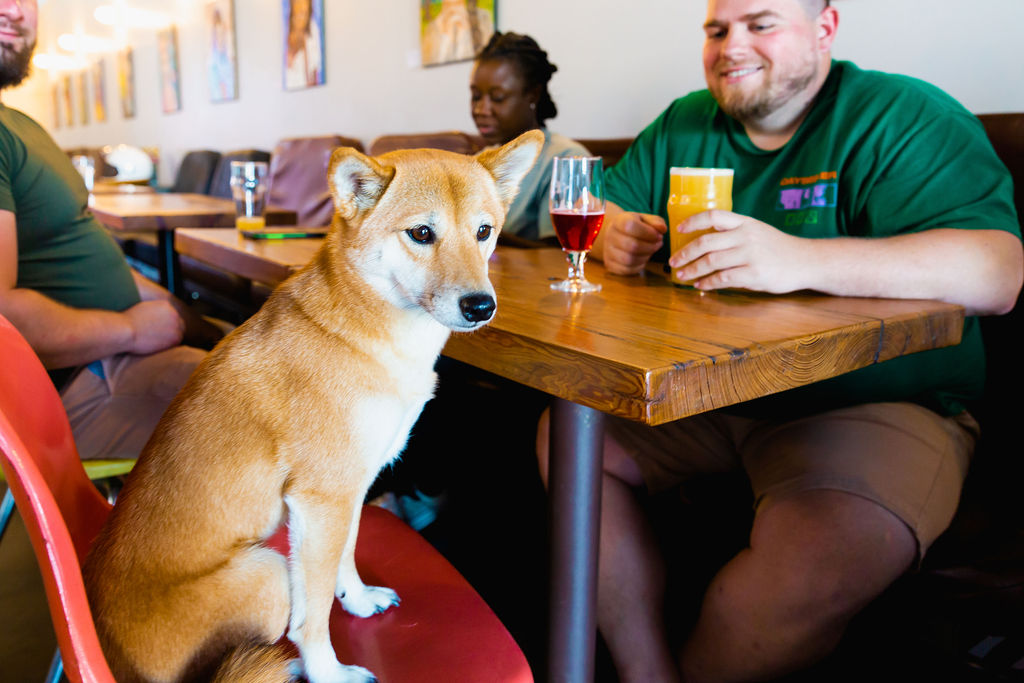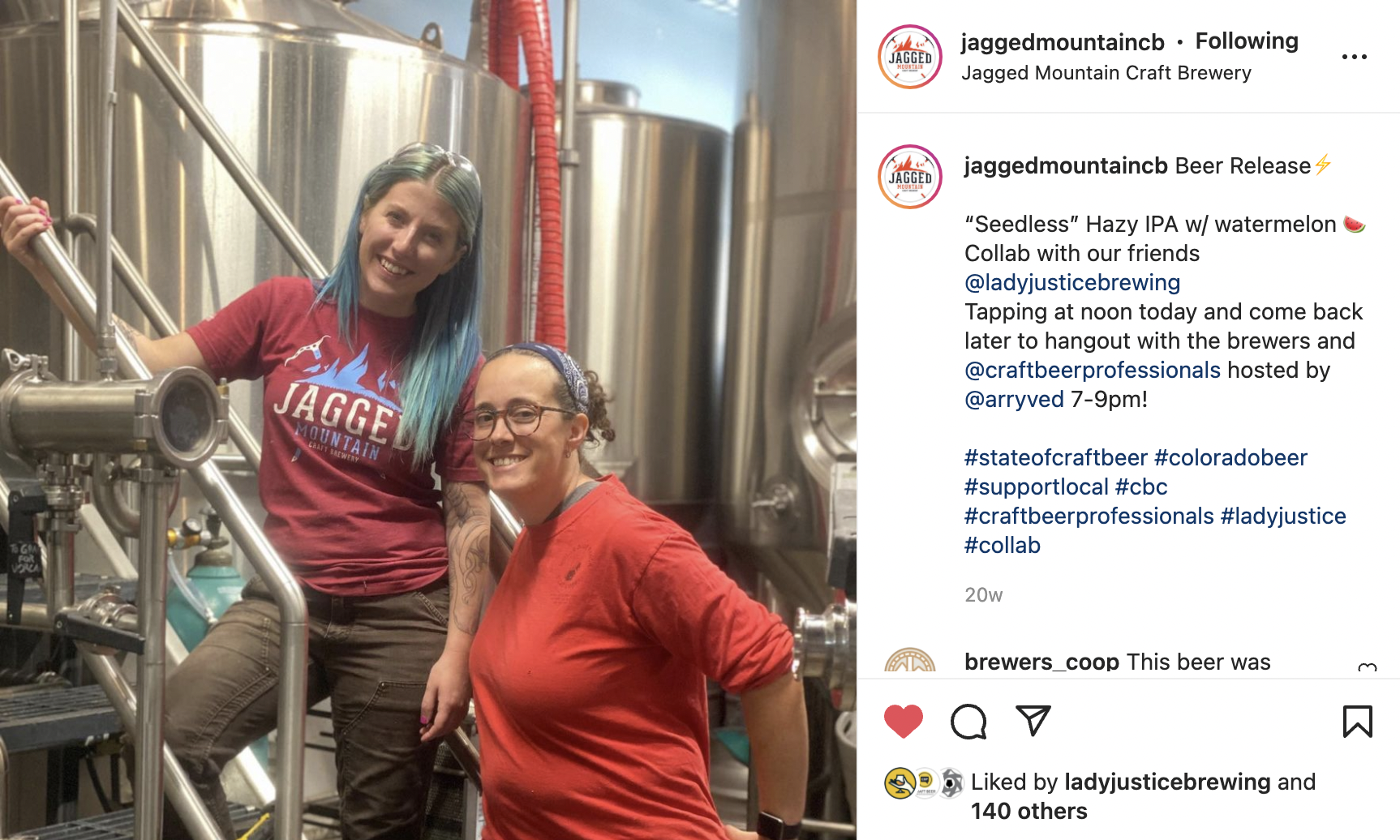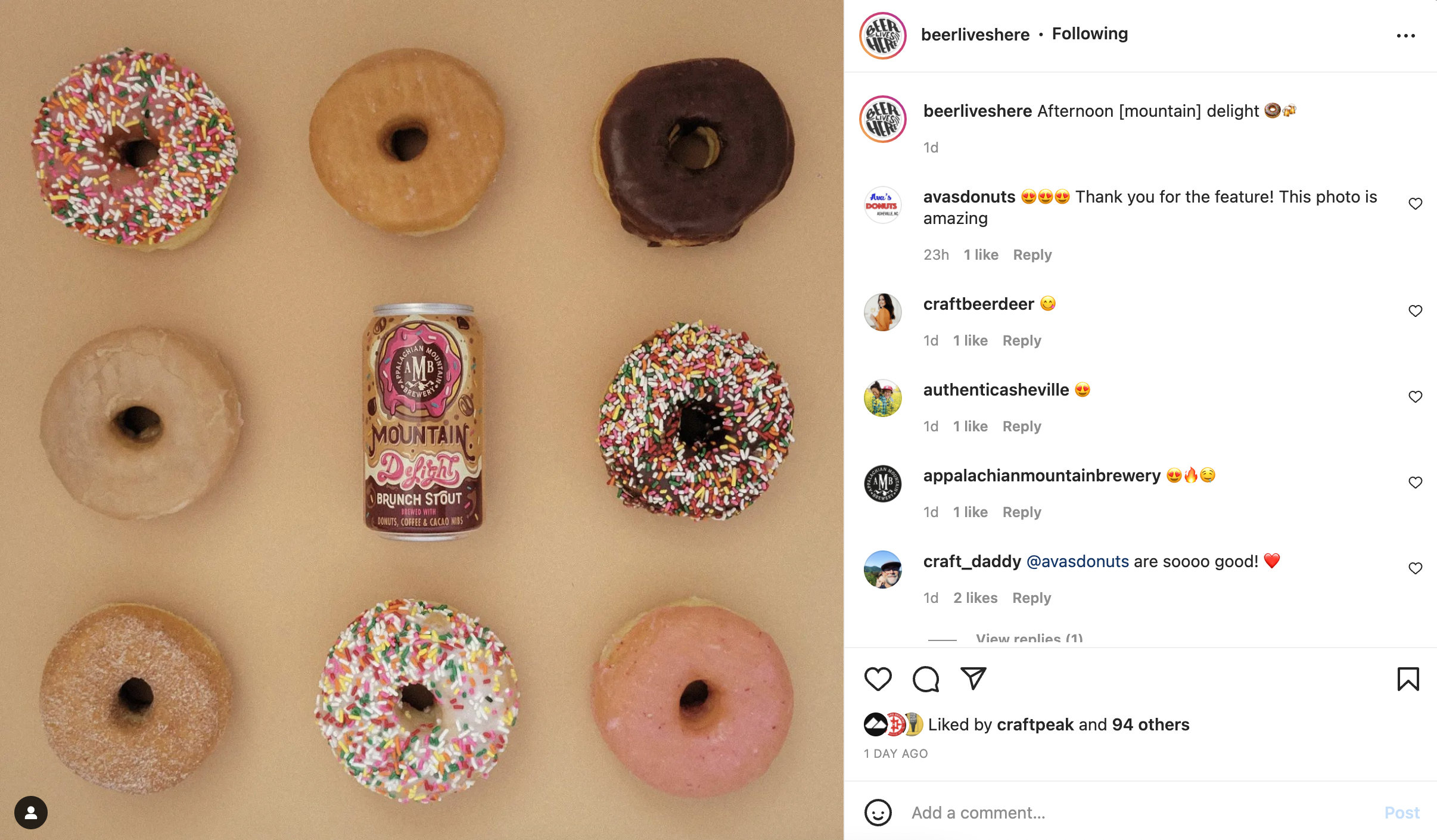2022 Trends for Brewery POS System
Breweries are choosing to lean in, adapt, and wow as they prove resilience time and time again. Let’s check out 20 brewery POS system trends we can expect in 2022.

Entering another year of unknowns isn’t so intimidating with beloved staff and a brewery POS system by your side. New brews on tap, increasingly smart technology, differentiated revenue streams, and navigating the never ending hurdles that get thrown the brewing industry’s way are just some of what’s to come this year. As always, breweries are choosing to lean in, adapt, and wow as they prove resilience time and time again.
Here are 20 brewery POS system trends to expect in 2022:
New To Brew
Brewers are always racking their brains for what the next best pour will be. Thankfully brewery POS systems work with dynamic digital menus, so you can experiment with brews and easily take them on and off menus. Brewery POS systems also offer robust reporting tools, so you can look back later on to see if what you tried could be a new money maker! Diversifying menu items helps you cast a wider net to welcome new people and taste buds.
These are some trending bevvies you’re likely to see on tap in 2022:
1. Seltzer’s Share Grows
Malt-based seltzers blew up in popularity initially in 2019, and their consumer pull is only expected to grow in 2022 and beyond. In fact, Jim McCune, Executive Director of EGC Group’s Craft Beverage Division, says the hard seltzer category is expected to be worth $15 billion in 5 years. Of course, the White Claw and Truly brands continue to dominate, but now there are over 8,000 US breweries offering their own flavored seltzers on tap.
New Belgium Brewing is one of the breweries hopping aboard the Seltzer Train. In March 2021, they launched Fruit Smash hard seltzers. According to their CEO, Steve Fechheimer, “Through edgy, creative, bold, and colorful packaging and an irreverent brand tone, we think Fruit Smash can shake up the seltzer category.” New brands will be throwing elbows to do the same this year.
2. Lagers Become Cool Again
Bud Light, Coors Light, and other mass-produced American beers have taken over the lager game in recent years. But craft brewers are taking back the lager spotlight, making it a mission to produce higher quality versions of the lighter brew. Lagers appeal to the growing health-conscious crowd, and their lower-ABV also makes them easy to drink. For the first time in years, a lager made the Top 10 Styles of 2021 from Untappd!
Of course, to make their lagers stand out, breweries are relying on local craft ingredients and embracing lesser-known European lagers. For example, Cohesion Brewing focuses on serving up the proper foam with their Czech lagers, and Suarez Family Brewery was inspired by Bamberg, Germany’s traditional smoked beers for their dark lager.
With all the effort going into these delicious brews, methinks everyone will stick to Coors Light for beer pong.
3. IPA Falls Off
IPAs are known for being hop-heavy and high in ABV, and they became a buzzword in breweries nationwide the past few years as thirsty guests gobbled them up. Brewers were focused on making the next best IPA, but consumer interest in the brew has significantly fallen as of late. Chris Morley, owner of Mason’s Brewing, notes “It’s hard to get blown away by an IPA anymore.”
4. A Tubular 1980s Comeback
What’s filling that IPA gap? Ambers and brown ales. Jeff Alworth, author of The Beer Bible, believes that it’s time for the next wave of beer snobs to discover these first-generation craft beers. Of course, brewers will be modifying recipes to fit modern palates, and turning these styles into accessible, fun choices for new-timers.
5. No-ABV Beer
A trend we’re seeing across the food and beverage industry is the increased focus on choosing healthy options. That’s why it’s no surprise non-alcoholic beer will hit the mainstream this year, with BevAlc Insights reporting that non-alcoholic (NA) products are up 120% on Drizly since 2020.
But no alcohol doesn’t mean no flavor. Breweries are upping the ante, rewriting the formerly poor reputation for NA beers, and focussing on delivering the same great taste and experience of their other brews. Here’s one that would make your Dry January not suck: Dogfish Head’s Lemon Quest, an NA wheat beer with lemon puree, blueberry juice, acai berries, monk fruit extract, and sea salt.
6. Synthesized Ingredients
Besides what’s going to be new on tap, 2022 will see a big reliance on high-tech solutions for the shortage of hops and yeast. Alworth notes hop products, flavor additives, and bioengineered yeast are all on the table as breweries struggle with the effects of climate change and wildfire smoke.
Here is some of the science replacing raw ingredients:
- Phantasm Powder: Packed with thiols—a family of sulfur compounds—it’s used during active fermentation to give a tropical fragrance
- Incognito and Spectrum: Concentrated liquid products from John I. Haas used for dry hopping
- Omega Yeast: Pitch-ready liquid yeast
- Berkley Yeast: Genetically engineered yeast that quickly produces lactic acid
7. Collaboration Brews
Much like when J. Lo and Shakira teamed up, sometimes two of your favorite breweries are better together. EGC’s McCune identified a growing number of brewery collaborations as an industry trend, partly because it lets breweries share customers, equipment, staff, and other resources that are hard to come by these days.
McCune also makes a good point about the community of craft, noting “Collaborations defy the conventional business rules of competition, which gives them a highly unique cool factor. Customers are naturally curious about the results of each collaboration, and want to make that determination for themselves, which results in beer sales from the collaborators’ consumer bases, and beyond.”
Jagged Mountain Brewing and Lady Justice Brewing head brewers working on a collaboration beer. Image courtesy of Jagged Mountain Brewing. Both Jagged Mountain Brewing and Lady Justice Brewing are Arryved Customers.
Brewery POS System Trends
Your brewery POS system is an honorary staff member and secret weapon when it comes to reducing service friction. Thinking you need to level up? Here are 3 must-haves in a brewery POS system this year:
8. Mobile & Cloud-Based Or Bust
With all of the moving pieces to come in 2022, taprooms can’t stand to let their brewery POS system tie them down. Traditional POS systems with a stationary terminal are a thing of the past, and mobile, cloud-based brewery POS systems are of the future. By 2025, mobile POS payments are expected to reach $4.65 million.
Besides the actual devices of mobile brewery POS systems being easier to manage, this adoption is largely being driven by staff preference and guest satisfaction. Smart technology that makes staff more efficient, the ordering process faster, and data even savvier is a no-brainer to breweries optimizing for business growth.
9. QR Code Menus, Ordering, & Payments
Speaking of smart technology, QR codes made their pandemic-induced debut in 2020, and they are here to stay. Supported by brewery POS systems, these matrix barcodes allow thirsty guests to scan, order, and close their tabs all from their own smartphones. And besides easing social distancing worries for both your staff and guests, there are many business advantages:
- 24% higher tabs when guests open tabs and order on their own devices due to ease of ordering
- 24% higher tips when guests open tabs and order on their own devices
- Improved staff-guest interactions surrounding education and upselling
- Increased efficiency in both front and back of house with smaller staff size
For more on these business opportunities, how to implement QR codes in your own space, and brewery POS systems that can help, check out The Ultimate Guide to QR Codes in the Taproom.
10. Loyalty Programs
With reports that 75% of consumers prefer to purchase from businesses with loyalty programs in place, it’s obvious a 2022 trend will be bigger and better brewery rewards programs. These are great tools to drive traffic, engage guests, and build your brand, especially when breweries aren’t seeing regulars as often as they once were. With the help of your brewery POS system, you can email members, incentivize with promotions and special releases, and stay top of mind with your fanbase.

Emerging Ways To Imbibe
No doubt did the pandemic shift a lot of social habits, none more so than imbibing with friends. (Are people still Happy Hour-ing on Zoom?) And instead of waiting until things return to how they used to be, breweries are rolling with the punches and meeting customers where they are.
11. Beer E-Commerce
According to Brewbound, e-commerce alcohol sales reached $6.1 billion in 2021, with online beer sales at $960 million. Craft website marketplaces like Craftpeak and Onzr have seen online storefront efforts soar recently as more and more people prefer to order their booze online. Brewery POS systems can support this new revenue stream, with all sales synced from on-premise and online.
12. Direct To Consumer
To take that one step further: Direct to consumer (DtC) shipping of beer is a growing consumer demand. Drizly recently got acquired, and brewery POS systems are creating their own tools to ship both locally and nationally. By offering pickup and delivery options, breweries eliminate the limitations set by taproom capacity, geography, and hours of operation. Making an extra dime while curbing a fan’s craving is just another way to benefit your bottom line and stay top of mind.
13. Taproom Goods To-Go
As breweries seek other distribution channels besides on-site taproom sales, the answer may be right in front of them. Offering growlers and cans to-go will be a popular way for breweries to upsell in the coming year. Your brewery POS system can even help spike interest by prompting a 6-pack add-on or offering a discount for one at checkout.
14. Beer & Food Pairing
Curating meals for guests with a special beer and food pairing will be a popular way breweries try to incentivize guests to come in-person. If you don’t know where to start, the Brewers Association has a great matching chart, offering food ideas for each kind of brew. Julia Herz, Executive Director of the American Homebrewers Association, encourages breweries to experiment this year, and sees buy-in from chefs and restaurants in her 2022 crystal ball.
15. Influence Is Real
Online communities thrived in the pandemic because, well, what else were we supposed to do? McCune reports that the craft beer Instagram community became “colossal” in size, where craft aficionados flocked to social media to geek out on their favorite beers and track new releases. Breweries should capitalize on these online interactions in the coming year, as word-of-mouth and a pretty picture are the perfect recipe for getting a new customer in the taproom.
Our favorites? Check out @beerliveshere for an aesthetically pleasing scroll, or @beerselfie for a highly-trafficked collection of craft drinkers.
@Beerliveshere beer influencer post. Image courtesy of @Beerliveshere.
16. Adding Taprooms
Competition in the beverage industry is tight. With almost 9,000 breweries nationwide and all of the other alcoholic choices out there, breweries are getting creative with how to maximize on-premise sales. In 2022, you can expect to see your favorite breweries opening additional taprooms and locations.
Hi-Wire Brewing is a great example of this. They started in Asheville, NC in 2013, and now run 7 locations across state lines. Owner Chris Frosaker said Hi-Wire’s additional taprooms are “great marketing and revenue hubs.”
Post-Pandemic Survival
COVID was the first domino to fall in a couple really tumultuous years for the hospitality industry. The effects of climate change, wildfires, the labor shortage, and supply chain issues continue to throw curveballs at brewery owners today. So how are craft industry folk responding?
17 & 18. Aluminum & Malt Shortages
Nearly every facet of brewing has been impacted by supply chain issues, namely aluminum cans and malt imports.
When Ball, the largest can supplier in the American beverage industry, announced new order requirements that would prevent small, independent breweries from using the manufacturer for printed cans, even the President and CEO of the Brewers Association spoke out. Bob Pease wrote an email statement, noting “Most breweries cannot order or store [one million] cans per SKU. Having to go to labeled cans and adding broker fees will drive up prices for small brewers and make their products less cost-competitive versus larger brewers, who already have scale advantages.”
Other options are slim, unfortunately. Breweries are turning to brights with vinyl labels, broker companies, and even buying their own canning equipment. All of these alternatives are a blow to budgets, but switching to glass bottles isn’t a viable option according to brewers.
Imported malt is hard to access too, due to the backup of overseas freight. And although domestic craft maltsters are eager to fill the void, they’re also facing inclement weather challenges with their crops. Barley crops in the US and Canada have been hit with intense heat, drought, and too much rain, creating problems with carbonation and flavor.
Jesse Bussard, the Executive Director of the Craft Maltsters Guild, remains optimistic and encourages teamwork: “Figuring out how to brew with 2021 malted barley may require adjustments to milling, mashing, and brewing. Working closely with a maltster… will prepare brewers to meet this challenge.”
19. Racial Equity & Inclusion, & Fighting Discrimination
Like all industries in the US, craft folks are grappling with the racial inequality that was brought to the forefront of conversations in 2020. In addition to that, craft businesses nationwide were challenged with sexual discrimination allegations when Brienne Allan began a new wave of the #MeToo movement, posting anonymous accounts of sexual harassment, racism, and assault in brewing on her Instagram.
Moving forward, breweries are on a mission to do better in 2022, and thankfully, industry stakeholders are seeking more than talking the talk from brewery owners. A band of organizations have formed BRU (Brewing, Respect, and Unity) Coalition in an effort to fight discrimination and sexual harassment by organizing trainings, creating codes of conduct, and prioritizing safe events. To attract the talent and passion breweries need to be successful, they must make it a priority this year to create a culture and space where employees feel safe.
If you want to raise money and awareness for organizations like BRU, your brewery POS system can support fund collection with features like donation at checkout.
20. [Distributor] Sharks In The Water?
In the craft world, mid-sized breweries tend to imagine Anheuser-Busch and Molson Coors as Pac-Men gobbling up independent breweries, often labeling them as sellouts. The scab was reopened recently, when the sports drink giant, Monster, entered the alcohol market and bought Canarchy.
On one side of this seesaw, people in craft believe that smaller breweries are forced to partner with these big names to grow, and throw their fists at the sky, cursing consolidation.
But, on the other hand, some believe the industry should shrug these acquisitions off, and sip your worries away down the street to support your favorite local spot.
The world is playing hardball and you need a brewery POS system that’s built to flex with your ever evolving business needs. Arryved is the only brewery POS system built specifically for craft, with the right tools, pricing, and team to support your growth. Get a free, custom demo today!


